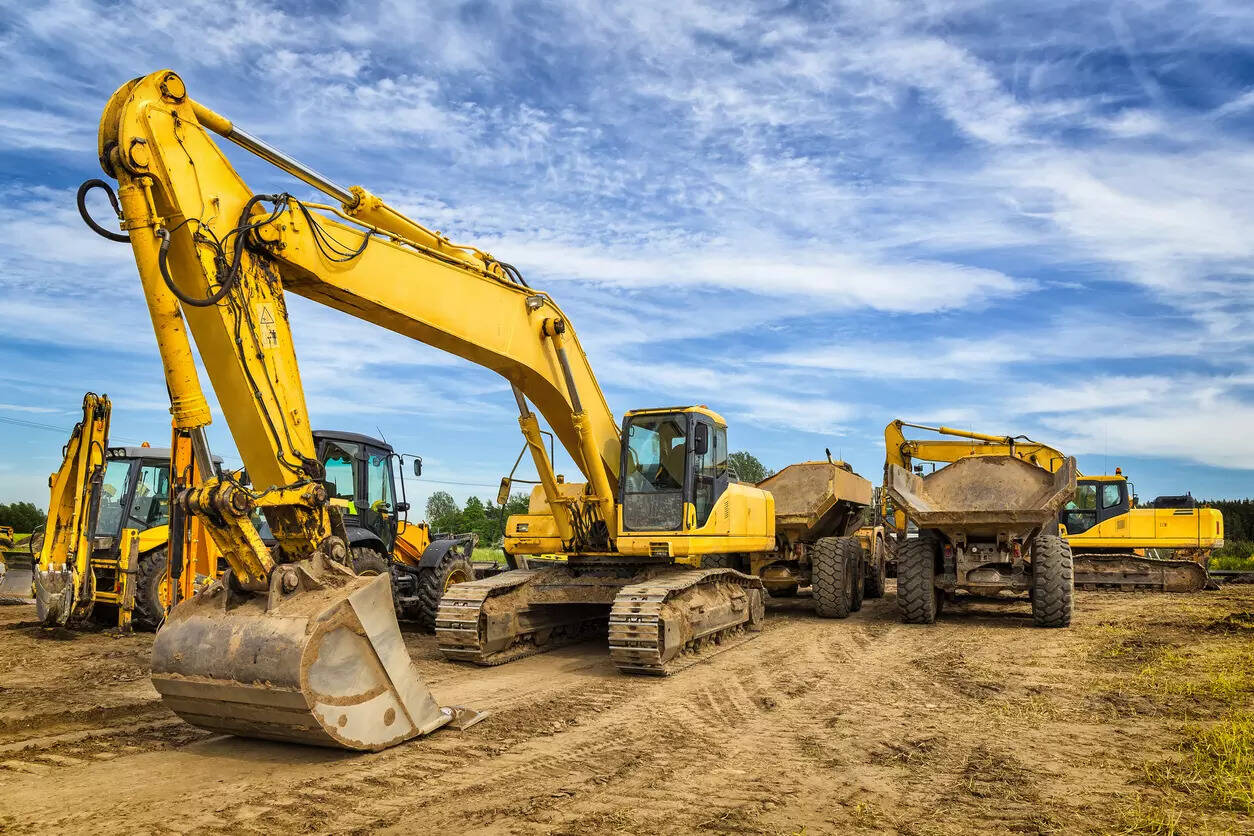
India’s construction equipment (CE) industry is no longer just a domestic marvel — it has evolved to be a global competitor, revolutionising infrastructure globally. Once dominated by imported technology, the industry is now a hub for indigenous innovation that meets global supply demands. Machines made in India are driving some of the world’s biggest projects, from Africa to Southeast Asia, challenging the dominance of global heavyweights and winning.Engineering self-sufficiency for ‘borderless’ tomorrow
According to the Indian Construction Equipment Manufacturers’ Association (ICEMA), India, which currently is the world’s third-largest CE market, will move up the ladder to number 2 by 2030. And what seems to be fuelling this unprecedented boom in the industry is the government-led infrastructure push, strategic investments and ever-increasing focus on “Atmanirbharta” (self-reliance). Indian companies are not just expanding in scale but also enhancing their technological capabilities, ensuring that ‘Made in India’ equipment meets and exceeds the global standards.With a remarkable 26per cent growth in FY24 alone, the CE industry has become one of the most dynamic sectors of India’s economy. With projects under the National Infrastructure Pipeline (NIP) and Gati Shakti, which are redefining energy corridors, highways, railways and urban development, this upward trajectory is expected to continue.
However, the real change is taking place outside of India. Indian CE businesses are now significant exporters, providing cutting-edge equipment for international infrastructure projects. With precision-engineered cranes in ports in Latin America to earthmovers in oil fields in the Middle East, Indian equipment is demonstrating its reliability and efficiency on the global stage.
Despite challenges such as fluctuating real estate demand and supply chain constraints, Indian manufacturers are responding with innovation and resilience. Original Equipment Manufacturers (OEMs) are localising production to bridge the supply-demand gap, ensuring that India not only meets domestic needs but also strengthens its export capabilities. However, some challenges such as regulatory complexities, land acquisition issues and the need for skilled labour also need to be addressed.
Indigenous push fuels global flight
Backed by anticipated investments of $4.5 billion over the next six years, the CE sector is expected to deepen its foray into the global markets. India’s capacity to supply high-performance and competitively priced machinery makes it a preferred source for developing nations.
International leaders are increasingly sourcing construction equipment from India, drawn by its world-class and cost-effective solutions. Simultaneously, Indian firms are expanding their operating facilities to reduce lead times and enable international clientele custom-tailored to local specifications. India’s shift from a cost-driven economy to a quality-driven innovative market marks an important milestone in India’s global CE aspirations.
Smart, sustainable & unstoppable
The new frontier in CE is not only about size or scale anymore. It has evolved to include sustainability and technological superiority. The manufacturers are integrating telematics, AI and the Internet of Things (IoT) to enhance equipment performance, predictive maintenance and efficiency. Smart fleet management systems and autonomous equipment are becoming the industry standard now, assisting companies all over the world in streamlining their operations.
Indian firms are not just going smart, but are staying rooted in purpose by being deeply aligned with Prime Minister Narendra Modi’s vision: “For India, One Earth, One Family, One Future is a Commitment”. While sustainability is reshaping the industry, India is becoming a major supplier of green construction equipment a step in line with India’s ambitious target of achieving net-zero emissions by 2070. As the Government is making significant investments in clean energy, the industry is innovating to cut emissions by vigorously using and promoting electric cranes and hydrogen-powered machines. Powered by the global shift towards cleaner and greener infrastructure, Indian companies are taking the lead in eco-friendly machinery.
Importing technology, exporting innovation
Indian CE companies are now seen by global markets as first-choice partners in creating the future rather than as substitute suppliers. India is now setting global trends rather than just following them, thanks to its advanced R&D, modern production facilities and strong hold on cost-competitive innovation.
Indian CE players are now actively representing their futuristic yet indigenous portfolio at premium global events like BAUMA Munich 2025, the world’s most prestigious trade fair for construction and mining equipment. The presence of Indian leaders at this global platform is a testament to India’s engineering prowess, establishing the country’s leadership in the sector.
India’s transition from a technology importer to an exporter of cutting-edge innovation is reflected in the country’s CE industry. Indian machinery is currently reshaping highways, industrial centres and skylines all over the world, demonstrating that the country’s engineering capabilities are on a par with the best in the world.
As India gears up for a decade of unprecedented infrastructure expansion, its construction equipment industry stands at the forefront, not just meeting domestic demands but setting new international standards. The world is no longer just watching India’s rise — it is building with it.




